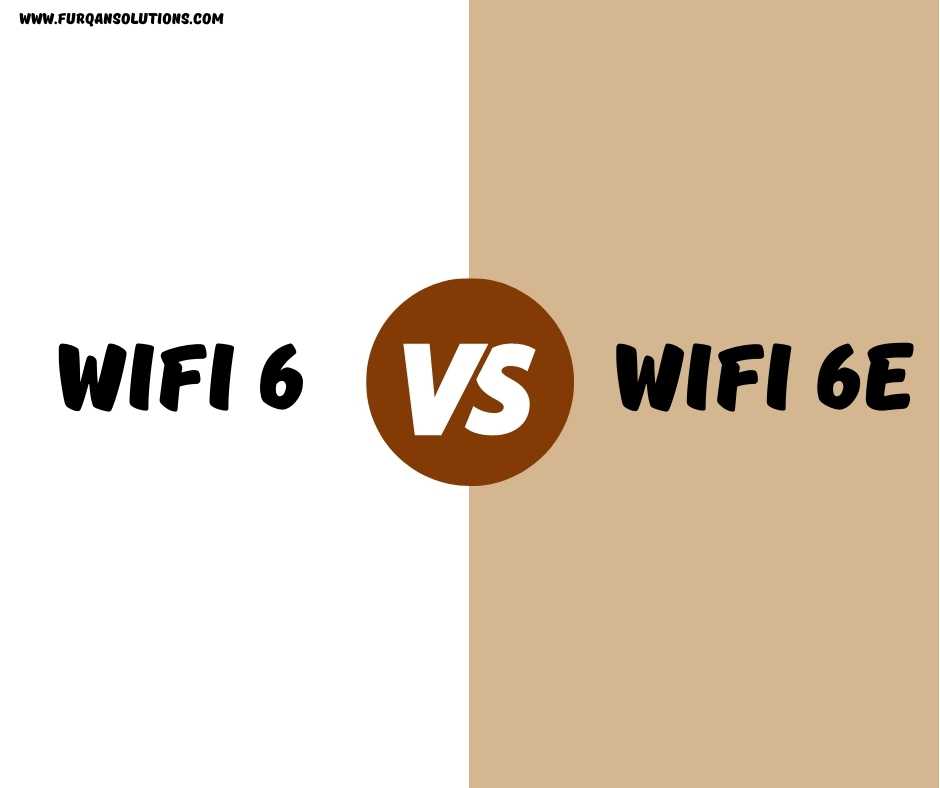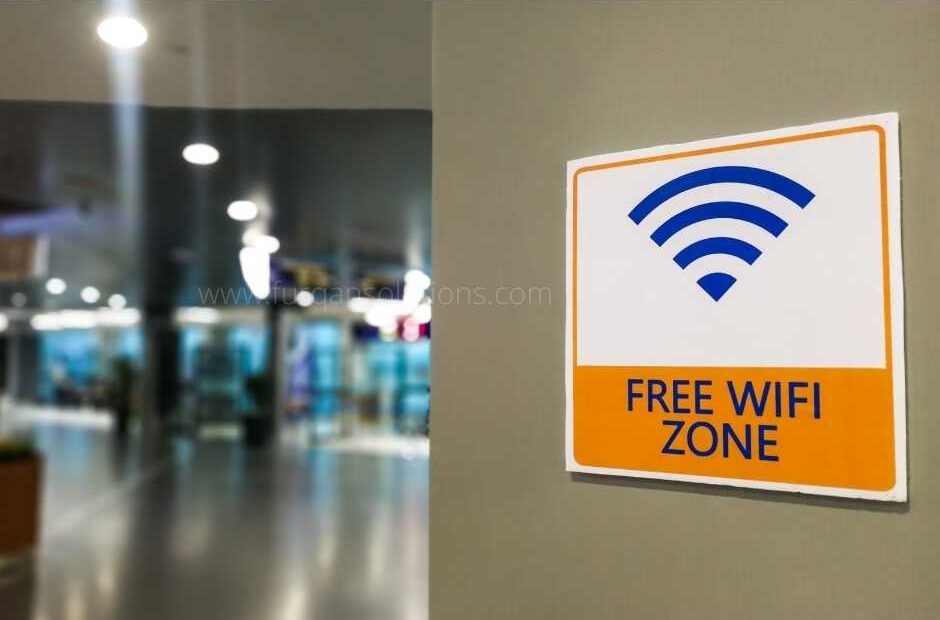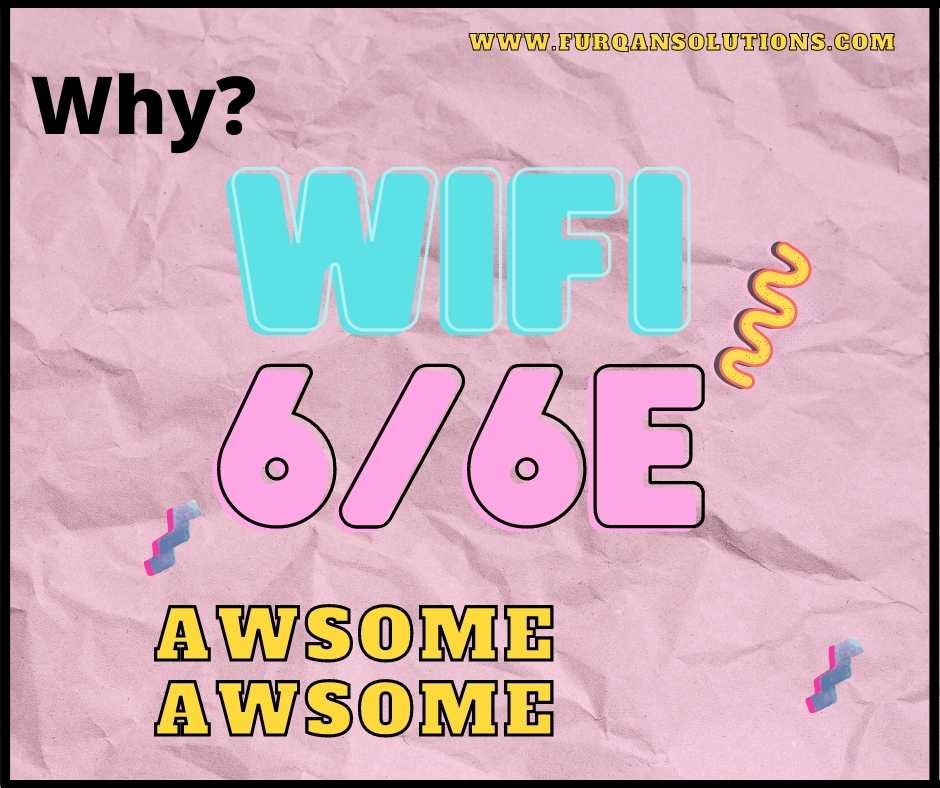The latest generation of Wi-Fi is here. It’s actually been around for a little bit recently, which is WiFi 6 vs WiFi 6E by extension. Now the technical term is actually 802.11ax, but the number system works a little bit better for understanding. the previous one is 802.11acis there for Wi-Fi 5, but the latest one is 6. Now the other one, Wi-Fi 6E which you might not have heard of. It’s still part of Wi-Fi 6 but has one important additional feature which is actually huge.
So what I’ll do is first explain what that big difference is in wifi 6 vs wifi 6e. And then also how Wi-Fi 6 and 6E are both ways better than Wi-Fi 6 or Wi-Fi 5, the previous one. And of course, I’ll try to break down the really technical stuff and explain it as simply as possible. So you don’t have to be some kind of expert.
WiFi 6 vs WiFi 6E

Well for context, I do want to point out they both do have the same features and improvements over Wi-Fi 5. I’ll go over what all those are afterward, and they include all of these things, but it’s important to know that WiFi 6 vs WiFi 6E do have basically the same functionality. However, the difference comes in the frequency spectrums.
So, while Wi-Fi 6 supports the same 2.4 and 5 GHz bands as previous Wi-Fi 5, Wi-Fi6E will actually support an additional third 6 GHz band that was just recently opened up by the FCC and registered for unlicensed use, meaning Wi-Fi can use it. And other countries are also opening up part of the 6 GHz band, all for use in Wi-Fi. And this might not sound like a big deal, “oh we already have dual bands, why do we need three bands?”But it actually is a huge deal and I’ll explain why.
Why 6GHz is Needed
What does this mean? How is it better? So, the biggest benefit is going to be in noisy areas. And what I mean by that is areas that have a lot of Wi-Fi signals bouncing around a lot of access points and routers.
For example offices, apartment buildings, public venues, the stuff where a lot of people are going to be on their phones and all connecting to similar Wi-Fi hotspots.

With this new spectrum, it’s going to allow a whole bunch more space for Wi-Fi channels. So different access points don’t have to be competing over it, and it’s going to have way less interference.
You see when you set up a router, you have to choose or have it auto choose, a single channel it’s going to operate on, and then all your devices are going to be connecting that single channel. And the channel is basically a certain range of the full 2.4, 5, or 6 GHz range. You only choose a small part of it.
The fewer the channels, then the more those are going to have to be shared by nearby access points such as your neighbors. If you have more than three neighbors, like an apartment complex nearby, then there is going to be some overlap, and you’re going to have to both be potentially using the same channel, it’s going to cause a lot of interference. And the current 2.4 GHz, especially, but also 5 GHz range, both have some shortcomings that 6 GHz will solve. Consider 2.4 GHz, for example. The most common one, ironically.
Did you know that there are literally only three non-overlapping channels on 2.4 GHz? And it’s used by a whole bunch of other stuff, not just Wi-Fi. It’s used by Bluetooth, baby monitors, car alarm sensors and stuff, even garage door openers, microwave’s when you run them, and not to mention a whole bunch of different smart home protocols like ZigBee and stuff.
Now the 5 GHz spectrum should theoretically have fixed this. I mean, it’s got the entire 5 GHz to work with, so that’s way more than the basically 100 MHz of 2.4. So why is 6 GHz so much better, even though 5 GHz is basically the same amount of frequency, and we have that now? Well, in reality, the actual really usable amount of the 5 GHz spectrum is not as big as you might think.
Now it is significantly bigger than 2.4 GHz.For example, where 2.4 only has three non-overlapping, 20 MHz wide channels.5 GHz has 25 channels. Except not really. You see 16 of those 25, 5 GHz channels are what are called DFSchannels: Dynamic Frequency Selection.
These are channels that happen to share the same frequency used by radar from airports, weather radar, stuff like that. And there’s actually a law in the United States and elsewhere that basically says because radar was used before and they don’t want Wi-Fi interfering with it, even though Wi-Fi can technically use these channels, all Wi-Fi devices and routers have to have technology built in to be able to detect radar signals.
And if it does, it has to shut off the Wi-Fi, which means if you live near an airport or near a weather radar station that’s sweeping by all the time, then those DFS channels are probably going to be completely useless to you.
And also because of these restrictions, a lot of consumer-grade routers don’t even allow you to select these channels. Because if people didn’t know about this and they started using those channels, and then their Wi-Fi kept randomly cutting out, then they would probably blame the router for having crappy connectivity when it’s just following the law. So they don’t even let you connect to those.
So really you have a very limited number of those 5 GHz channels that don’t have this restriction in there. So really you only end up with nine truly free Wi-Fi channels, which is still better than 2.4, but with five GHz ac Wi-Fi. There’s actually a technology that a lot of routers use, or are able to use, where it combines different multiple channels. So you can have 40 MHz channels made of two 20 MHz channels or even 80 or 160 MHz wide channels, combining a whole bunch.
And usually, an ac router is going to try and by default do about 40 MHz wide. And considering the DFS channels, that means there are only about four 40 MHz wide usable channels if you’re going to do that. It’s not required, but it will get you the higher speeds.
If you are in a very, very crowded environment, then you will probably have to only use 20 MHz wide, even on 5 GHz.And then if you wanted to use an 80 MHz wide channel, there are only two of those. And with the 160 MHz, then both of them are either completely engulfed partially engulfed by those DFS channels.
So, you might not even want to use those. But again, 5 GHz is still way better than 2.4 in pretty much every way, except range. It’s faster, there are more channels. But since those non-DFS channels, which are limited, are pretty much the standard ones, then it might not cut it going forward to be future-proof. That’s where 6 GHz comes in.
Why 6GHz is Awesome

The 6 GHz full-spectrum is actually from 5.925 to 7.125 GHz. That’s actually 1200 MHz, a little bit more than a full GHz.And that means it supports a whopping fifty-nine 20 MHz channels. And then those can be divided into twenty-nine 40 MHz, fourteen 80 MHz, or seven 160 MHz. For example, in the United States, the FCC did regulate which parts of that full-spectrum can be used outside with standard or higher power Wi-Fi access points. And which can be used in lower power indoor use.
Now! the good news is that for indoor use consumer uses, you can use any of the channels. All of them are allowed. It’s just that on outside routers, which might be used on venues and stuff, then those are restricted and only 41 out of the 59 are usable there. But still, you don’t have to worry about that restriction unless you’re running a business or something like that. And it’s still a whole bunch, 41 it’s still a lot.
The other major caveat, which is the most unfortunate, is that if you’re outside theUnited States and Canada and some other countries, most of Europe, for example, is not adopting yet the full 6 GHz spectrum. They have only adopted an unlicensed use of 5925-6425 MHz range, which is half of what the United States and Canada have done.
That means that those of you who are in Europe or elsewhere on this map where it’s labeled, are only going to have twenty-four new 20MHz channels supported worldwide. Now I’m really hoping, and it does seem like this is the case for now, that Wi-Fi chip manufacturers are just going to by default add in the capability for all of these chips to support the full 6E / 6 GHz spectrum.
And not just limit it because it’s limited halfway in Europe, but they should definitely at least add the capability to have the full thing and maybe enable it by software later in case Europe does end up adopting the full 6 GHz spectrum, which there has been some pressure to do that. Though they haven’t really talked about it yet.
But anyway, the basic huge benefit of 6 GHz is that you’re going to have way more space and be able to not only have more channels if you need less interference, but you can also have way bigger channels that are going to have a lot more bandwidth, especially if you’re not in such a crowded area.
But what’s also cool is with this many channels, say you’re an outdoor concert venue where there are thousands of people all on their phones. And you, as the venue set up person, could set up 40different Wi-Fi access points, basically right next to each other. And each of them could have their very own individual channel.
So even though they all connect to the same network, as people use their devices to connect to the same Wi-Fi network, it’ll show up as one as a mesh network, but their phone will automatically connect to one with the least interference. It’ll be able to balance across 40 different things and just to have way less interference for all those people. If that makes sense.
Now, there is only a handful of Wi-Fi, 6E devices so far. I believe for, in terms of routers, Asus, Linksys, and Netgear have a few. And as for devices, I believe the Galaxy S21 Ultra has it. And I believe the upcoming iPhone is supposed to be rumored to have it. So it’s coming along, just you know, it’s going to take a little while and you will have to upgrade your router to be able to use that.
Why WiFi 6 & 6E Are Better
Now I did say I’d go over some of the big ways that Wi-Fi 6 and 6E are both way better than Wi-Fi 5, more than just having this extra new frequency. First of all, it’s a lot faster potentially. So, you can have up to 3.5 *Gigabits* per Wi-Fi stream, spatial stream they’re called, and you can have four of these (up to), depending on how high-end the device is. And therefore theoretically, one Wi-Fi router could have a throughput of like 14 Gigabits per second, which is kind of insane.
The other big technological feature of the Wi-Fi 6 is something called OFDMA. This basically allows the router to split one channel into many subunits and broadcast to several devices at once, for like every broadcast “pulse”, I guess you could say for every “time unit”, it can then do multiple devices. Whereas right now, they only send data on the whole channel to one device. Now, technically if the router supports something called MU-MIMO, which is multi-user multi-input multi-output, then it can technically talk to multiple devices simultaneously, but this OFDMA will be another way and be combined with that.
So it’ll just be way more efficient and connect to a whole bunch of different stuff at once. And then there are several more technical improvements, all designed to increase the efficiency of Wi-Fi 6 is particularly high-density environments.
That was really the main goal when they were creating Wi-Fi 6, which is to just be used when there’s a lot of density. Because we’re kind of experiencing that right now, and just Wi-Fi devices becoming more ubiquitous. Internet of things, lot more devices are going to be crowding our waves, we need more space.
If you want to know about more amazing content related to the latest technologies click here



